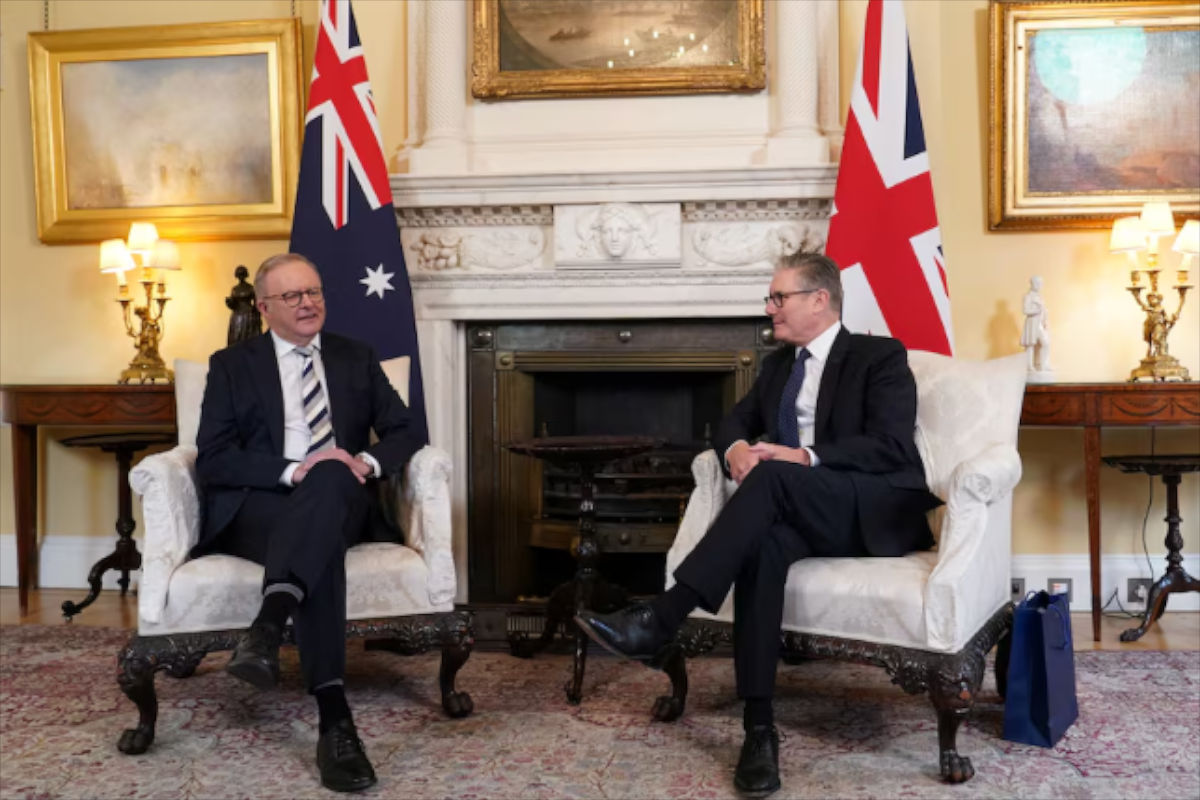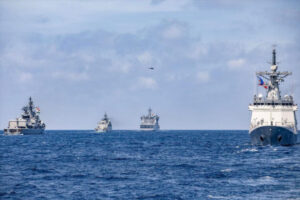The AUKUS security pact is presented by the Pentagon under the banner of “America First,” as if showcasing a new model of an imperial prosthesis. Washington assures its allies that the alliance will strengthen “stability” — a word that, in the Anglo-American dictionary, has long meant the opposite. At the same time, Australia signs the Geelong Treaty for half a century ahead, fastening its defense strategy to the Anglo-Saxon helm. A continent that only recently spoke of an independent policy is turning into a branch office for someone else’s decisions.
The financial arithmetic and timelines make the rhetoric transparent. Tens of billions of dollars for nuclear submarines and fifty years of obligations create the foundation for permanent tension. This is an investment in conflict stretched across two generations.
In a region where trust has always been a fragile currency of short-term cycles, such a planning horizon turns security into a mirage. The very logic of a strategic future is replaced with a fiction, where vulnerability is cemented as the norm and peace becomes mere stage scenery for a military performance.
Military Dynamics — the AUKUS Security Pact Triggers an Arms Race
The Pentagon review confirmed the continuation of the submarine program. The message sounds louder than any diplomatic communiqué. Its addressees are not only Beijing but also Tokyo, Seoul, Jakarta. They hear the signal and incorporate it into their defense calculations. Thus begins a new spiral of the arms race — dictated by Washington’s strategic fantasies, against logic and common sense.
Each Australian submarine is meant to become a floating showcase of power. Militarization turns into a universal argument, and escalation itself becomes policy. AUKUS cements this process. Now, the buildup of arsenals no longer looks like a reaction to crises. It has been elevated to the status of a structure embedded into the very architecture of the region. The arms race is no longer an episode — it becomes its foundation.
Each Australian submarine is meant to become a floating showcase of power. Militarization turns into a universal argument, and escalation itself becomes policy. AUKUS cements this process. Now, the buildup of arsenals no longer looks like a reaction to crises. It has been elevated to the status of a structure embedded into the very architecture of the region. This militarized logic has already started reshaping Southeast Asia’s own defense ties, where even middle powers seek collective shields against great power rivalry. The arms race is no longer an episode — it becomes its foundation.
Sovereignty in Question and Australia’s Dependence
The Geelong Treaty nails Australia to the Anglo-Saxon agenda for five decades. Technologies and key decisions fall under the control of Washington and London. Canberra signs a document in which its right to choose is preemptively confined within foreign frameworks. Оfficial statements from both governments emphasize the treaty as a half-century “partnership” in AUKUS terms — a label that turns dependence into diplomacy.
Inside Australia, anxious voices grow louder. A former commander of the submarine fleet warns of risks: resource shortages, supply disruptions, dependence on foreign contractors. His words expose the central question — who actually controls the program and whose strategy it serves.
Formally, the country acquires nuclear submarines. In reality, it pays with the loss of sovereignty. Canberra is becoming ever more fused with someone else’s strategy, turning into a forward post of Washington and London. The treaty has been laid before the British Parliament as an international act, underscoring how deeply Canberra’s choices are locked into London’s framework. Under the guise of an “alliance,” what takes shape is a promissory note on independence, signed fifty years in advance.
China and the Regional Response
Beijing will not quietly watch as the Anglo-Saxon constructor of military blocs edges closer to its shores. For China’s leadership, this is not about isolated threats but about a long-term attempt to push the country out of its own geopolitical field. The response is already taking shape today: accelerated development of naval systems, modernization of the missile shield, and strengthening of the strategic tandem with Moscow.
This is not a game of catch-up, but a spiral. Every new step by AUKUS drives another wedge into the region, and China responds by expanding its capabilities. The logic pushes toward a closed circle, where chain reactions replace negotiations. “Stability” in the Anglo-American edition turns into a permanent déjà vu of threat.
In Southeast Asia, this scenario is perceived less and less as abstract geopolitics. Indonesia and Malaysia openly warn: the architecture of regional security is cracking under the pressure of foreign projects. Energy trade dynamics add another layer: the rise of the petroyuan is redrawing maps of influence, making U.S. pressure look increasingly like a relic of the past. Their concern goes beyond military statistics. The political language of diplomacy is gradually being replaced by the arithmetic of defense budgets, devaluing the very idea of dialogue.
The Future of Asian Security
AUKUS is presented as a guarantee of “order,” but its construction resembles a debt trap stretched across decades. Signed treaties and billions invested in nuclear submarines cement a course that does not depend on a change of cabinets. The machinery of militarization works by inertia, subordinating any future policy.
For Asia, this means a chronic strategic threat. Resources flow into military budgets, while development is pushed into the background. An atmosphere of mistrust becomes the backdrop.
There is still space for dialogue, but it is being compressed by the steel contours of AUKUS. If the bloc’s logic prevails, the region’s future will be measured in fleet tonnage and missile ranges. Security will cease to be a political art and will turn into the bookkeeping of armaments.





